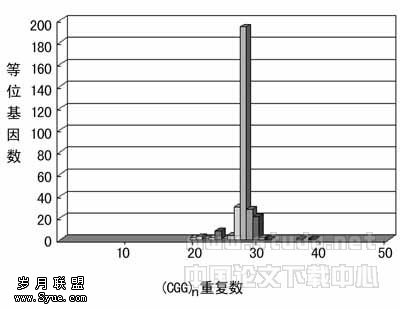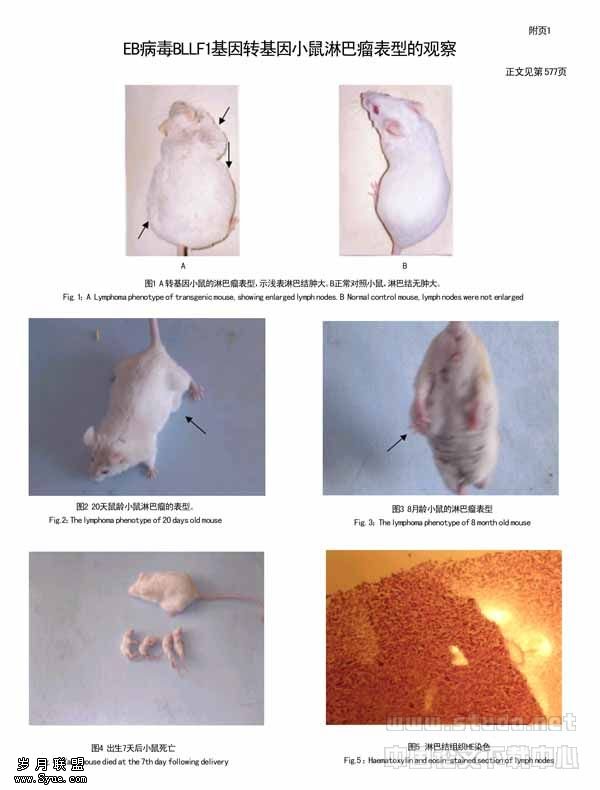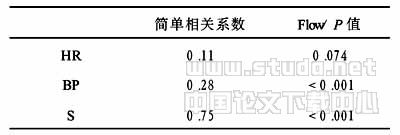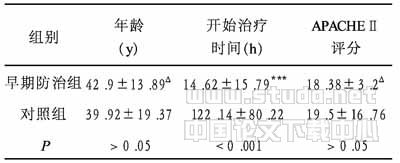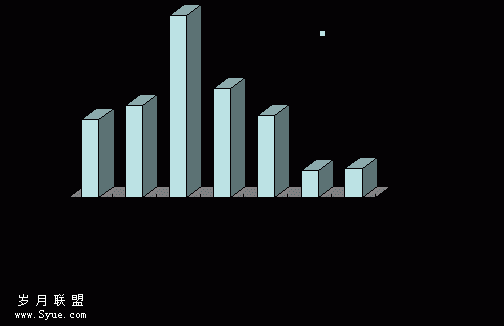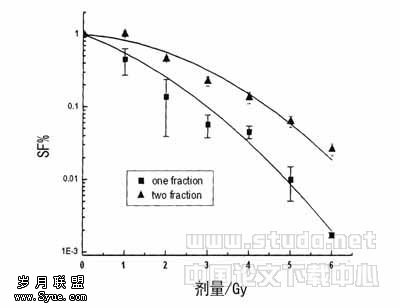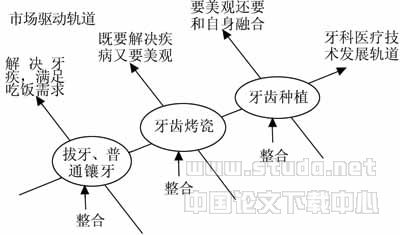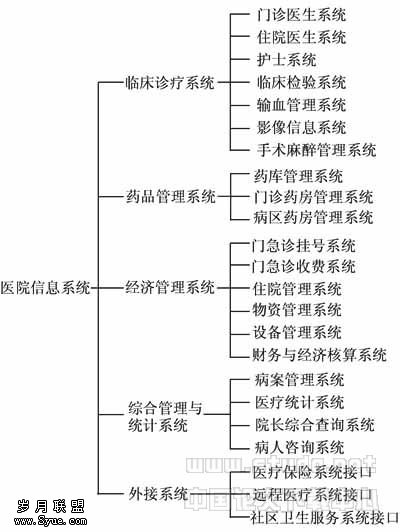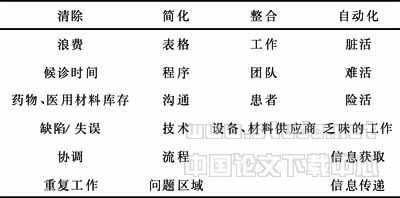Making PubMed Searching Simple: Learning to Retrieve Medical
作者:Beatriz Vincenta, Maurice Vincentb, Carlos Gil Ferreiraa
【关键词】 MEDLINE,•,PubMed,•,Medical,subject,headings,•,MeSH,Internet,•,Evidence-based,medicine,•,Education,,medical
ABSTRACT
Searching the literature has a direct, beneficial influence on patient care. The amount of medical scientific information has increased to a great extent, while the development of networking technologies has broadened access to online databases. Successful searches depend upon understanding technical librarianship concepts and the skills for mastering searching interfaces. From a problem-oriented approach, concepts like MEDLINE coverage, PubMed resources, Boolean logic, search strategies, and Web sources for full-text articles are introduced along seven online situations: locating a specific publication, answering a complex clinical question, finding information on a general subject, finding publications by a particular author, finding publications in a particular language, finding a specific publication type, and locating the full-text document. Oncologists should face the challenge of performing their own searches. Specific knowledge is mandatory to avoid frustrating, time-consuming work. The objective of this work is to present concepts, strategies, and skills required for medical literature retrieval, easing the incorporation of new and welcomed practices.
INTRODUCTION
Scientific journals are the primary publication media for professional communication. Once imprisoned in libraries, medical publications can now be accessed worldwide through the internet. More recently, Web-based resources provide regular professional updates, evidence-based patient care information, and medical problem solving [1]. Therefore, oncologists should be able to perform their own searches.
Specific training is needed because internet access and the World Wide Web revolution have introduced a multitude of technologies and resources into the medical field. The necessary skills for performing a successful search and locating full-text publications may include a technical librarian background on one hand and practical computer experience for managing sophisticated Web interfaces on the other.
The objective of this article is to present concepts, strategies, and skills required for successful literature retrieval. Database structure, MEDLINE coverage, PubMed resources, Boolean logic, search strategies, and Web sources for full-text articles are described. This publication has been divided into three main topics: (a) how to start, (b) how to search, and (c) finding the full-text article [2]. Original ideas from Greenhalgh [3] and Ebbert and colleagues [4] were adapted to create seven online examples using the same problem-oriented approach they presented.
HOW TO START?
Choosing an evidence resource database must be the initial step. A database is a collection of data organized to allow easy retrieval; MEDLINE, EMBASE, the Cochrane Library, and Best Evidence are valuable sources of information [5]. Because of its appropriateness, MEDLINE, the world’s most commonly used biomedical database [6], was selected for this work. MEDLINE is produced by the U.S. National Library of Medicine (NLM) and contains citations for a vast number of journal articles. Its relevance is described fully on the NLM Web site.
PubMed is a Web-based retrieval system developed by the National Center for Biotechnology Information at the NLM. As a search engine, it receives a search request, compares it with an index, and returns the corresponding results. PubMed queries match user submitted key words against MEDLINE records. A record consists of a set of data elements; fields required by MEDLINE include Title, Author(s), Affiliation, Abstract, Language, Publication Date, Journal Title, and Medical Subject Heading (MeSH) terms (Fig. 1). The MeSH field contains terms chosen from among 22,568 descriptors defined by the NLM. The MeSH vocabulary is continually updated. MeSH terms are assigned according to the analysis of expert indexers to best reflect article content [6].
HOW TO SEARCH?
Ebbert and colleagues [4] wrote a comprehensive review on PubMed features and resources. The main advantages of searching MEDLINE through PubMed are its user-friendly interface, sophisticated search resources, and built-in links to full-text documents [7]. Performing a PubMed search in the same way that one performs an ordinary Web search has a lot of appeal [6], since typing a word in a search box and clicking on "Go" using the Google or Yahoo! search engines has become a popular procedure. Techniques originally developed for internet search engines are adapted here for PubMed searching.
Spell It Out: Define the Topic and Generate a List of Search Terms
To search efficiently, users must first formulate the appropriate question [5] and then translate it into a database query by choosing specific terms. Searchers may look, for example, for specific authors, journals, generic words (free-text search), and/or MeSH terms. In a free-text search, records containing the given word anywhere in the title or abstract are retrieved, even those not necessarily related to the subject [8]. On the other hand, searching through MeSH terms allows retrievals limited to records on that specific subject, regardless the words the authors may have used [6]. Although MEDLINE contains publications from more than 5,000 journals published in many languages, MEDLINE field contents are solely in English. Therefore, key words for a MEDLINE search ought to be given in English. For non-native speakers, using the "MeSH Database" link featured on the PubMed home page on the blue side bar to confirm spelling is recommended. The MeSH interface translates a search word into the closest MeSH term [1]. It also shows which terms are not included in the vocabulary. Suppose we search using the words "breast cancer." Because breast cancer does not belong to the MeSH vocabulary, a more comprehensive search result would be obtained using the phrase "breast neoplasm."
Strategize: Choose the Tools and Resources That Will Work Best for Your Search
A good strategy returns a manageable amount of relevant citations―an optimal balance between a too-specific and a too-broad list of records. For a given subject, sensitivity (or recall) is the proportion of high-quality articles that are retrieved, while specificity (or precision) is the proportion of low-quality articles that are not retrieved [9].
In a free-text search, synonyms (e.g., neoplasm and cancer) and variants (e.g., tumour and tumor) of a term may be entered to ensure comprehensive results [8]. In order to increase recall, a recommended strategy is to type the truncation function (*) to replace the last letters of a word to pick up existing vocabulary variants [10]; for example, neoplas* [5]. If the search key is a multiword term, it is advisable to enter the term in quotation marks (e.g., "tumor bank") [11]. Searching for a term exclusively in the title field should be tried [10]; however, complementary searching using a specific author’s name may improve both the sensitivity and specificity of free-text searches [10]. Free-text searching is particularly useful when there are no appropriate MeSH terms for the subject [8]. Optimal results can be achieved when a free-text search is combined with a MeSH search [10].
Literature searches performed using MeSH terms show higher recall and precision than do single free-text searches; important references may, nevertheless, be missed because articles may have been indexed before a new term was included in the MeSH list [8]. An NLM indexer assigns 1012 MeSH headings and 24 major MeSH headings in the process of indexing an article [1, 6, 8]. Subheadings, another related concept, further describe a particular aspect of a MeSH term [1, 4, 6, 8] and are the fine-tuning of MEDLINE [3]. The MeSH browser, accessed by the MeSH Database link, displays MeSH subheadings that can be applied to a search term, allowing users to focus their search more precisely to a diagnosis, drug therapy, surgery, or other related subject [1, 8]. For narrowing a broad search, users can just mark the check box "Restrict Search to Major Topic Headings Only" because major MeSH headings are designated as the main focus of each article [6, 8].
Databases, in general, allow the use of Boolean operators [1]. Boolean operators are used to combine key words into a search expression. The connectors AND, OR, and NOT improve search specificity [1, 8]. In PubMed, these operators must be typed using capital letters [1, 4]. The AND operator retrieves a set of records containing all given search terms, regardless of where the terms are found (Fig. 2A). In contrast, the OR operator retrieves records in which any of the terms appear (Fig. 2B). The NOT operator should be used with caution because it may eliminate relevant citations. In free-text searches, the NOT operator eliminates every citation that contains the term following it somewhere in its title or abstract (Fig. 2C). PubMed processes Boolean connectors in a left-to-right sequence; the expression "breast NOT neoplasm" would, therefore, lead to a different set of references than "neoplasm NOT breast." Complementary information on Boolean logic can be found elsewhere [7, 11, 12]. The "Details" tab in the PubMed search window shows the complete search expression employed by PubMed [4].
Search: Get Online, Execute, Stay Focused, Use Advanced Search Features
Search strategies depend on searcher objectives. In this section, a problem-oriented approach [3, 4] and suggested MEDLINE and PubMed strategies [4] have been incorporated to create online examples of: locating a specific publication, answering a specific clinical question, quickly finding information on a general subject, finding publications by a particular author, locating publications in a particular language, and finding a particular publication type. To master PubMed resources, we suggest conducting online searches as you read this article.
Locating a Specific Publication
Search Strategy: Use the Single Citation Matcher Feature of PubMed The Single Citation Matcher featured on the PubMed home page on the blue side bar is the best tool for locating a particular article. Citations may be found by journal (full name or abbreviation), date, author, or title words, individually or combined [1, 8].
Answering a Specific Clinical Question: "Does Doxorubicin Reduce Breast Cancer Recurrence in Postmenopausal Women?"
Search Strategy: Use the MeSH Database Feature of PubMed (Option 1) Clinical questions have four basic components: the type of patient involved, the type of exposure the patient experiences, the type of control with which the exposure is being compared, and the outcomes to be addressed [1, 4, 5, 12, 13]. A well-formulated question would be: Does "type of exposure" improve "type of outcome" in patients with "type of patient" compared with "type of control"? while a poorly formulated question would be: Is "type of exposure" useful in "type of patient"? [1, 12, 13]. The question is then divided into its components: disease/population/procedure (postmenopausal women), therapy/intervention (doxorubicin), comparison (not applicable), and outcome (breast cancer recurrence) [1, 3, 5, 12, 13]. Following identification, search terms are translated into mapped MeSH terms and successively combined using Boolean operators [1, 3, 5, 8, 12]. Using the PubMed MeSH Database feature, the complete search expression can be obtained by checking off the suggested MeSH term(s) and selecting "Send to Search Box with AND" from the drop-down menu. The search is executed by clicking on the "Search PubMed" button after the complete expression has been entered (Fig. 3). The search query "Neoplasm Recurrence, Local" [MeSH] AND "Doxorubicin" [MeSH] AND "Breast Neoplasms" [MeSH] AND "Postmenopause" [MeSH] presented in Figure 3, combining outcome, exposure, disease, and population, led to three citations. Searchers should be aware that combining (ANDing) MeSH terms may be too restrictive. An alternative strategy is to map some of the MeSH terms in order to retrieve major articles on the subject and further combine them with a free-text search. The History tab featured on the PubMed home page displays searches in the actual order they were run [4]. From this page, it is possible to create new expressions by combining previous searches into new search strategies. Table 1 shows that the first search led to 257 citations, while ANDing it further to a free-text search led to 11 citations. The pound sign (#) must be used in the search query to refer to a specific prior search.
Search Strategy: Use the Clinical Queries Feature of PubMed (Option 2) Clinical encounters may generate questions about diagnosis, etiology, prognosis, treatment, or prevention [13]. The "Clinical Queries" link featured on the PubMed blue side bar can be used for retrieving references that are scientifically sound and directly relevant to clinical practice [4, 5, 8, 9]. From the Clinical Queries window, users may choose to either "Search by Clinical Study Category" or "Find Systematic Reviews." The Search by Clinical Study Category feature allows the user to select studies on therapy, diagnosis, etiology, or prognosis and to select whether the search should be more sensitive (retrieving more relevant articles, but probably including some that are less relevant) or more specific (narrowly focused, but probably omitting a few) [8]. The Find Systematic Reviews feature is used for locating systematic reviews, meta-analyses, reviews of clinical trials, evidence-based medicine, and other types of citations, as stated on the Clinical Query web page.
Quickly Finding Information on a General Subject: Doxorubicin Treatment in Postmenopausal Women with Breast Cancer
Search Strategy: Use MeSH Subheadings in PubMed Subheadings may be used to narrow searches that lead to an unmanageable set of citations [3]. By mapping the search word through the MeSH Database feature on the PubMed blue side bar, users are led to a list of subheadings [4, 8]. For example, after typing "breast neoplasm" in the MeSH window, the following two mapped terms are displayed: Breast Neoplasms and Breast Neoplasms, Male. After selecting the link Breast Neoplasm, "therapy" can be checked off from a list of subheadings and added to the query box by selecting "Send to Search Box with AND" from the drop-down menu to narrow the search. We complete our search by further searching for and checking off the MeSH terms "doxorubicin" and "postmenopause" and successively adding them to the query box by selecting "Send to Search Box with AND" from the drop-down menu. The command "Search PubMed" is then selected. The final search query, "Breast Neoplasms/therapy" [MeSH] AND "Doxorubicin" [MeSH] AND "Postmenopause" [MeSH], which is shown in Figure 4, led to 26 citations.
Sift: Filter the Results
The Limits tab on the PubMed home page is the ideal tool for refining searches [4]. Searches can be limited by language, age, gender, and publication type, among others. An infinite range of strategies can be created when the key words typed into the query box are searched in combination with these settings. To aid in comprehension, readers can refer to the MEDLINE record structure displayed in Figure 1.
Finding Publications by a Particular Author
Search Strategy: Use the Limits Feature of PubMed To retrieve citations by a particular author, the "All Fields" drop-down menu is set to "Author" and the author information is typed in the query box. Searchers may either use the author’s complete name (e.g., DeVita-VT-Jr) or family name (e.g., DeVita), or use the truncation function (*) (e.g., DeVita-V*).
Locating Publications in a Particular Language
Search Strategy: Use the Limits and History Features of PubMed By using the "Language" drop-down menu under the Limits tab, PubMed can retrieve articles published in English, French, German, Italian, Japanese, Russian, or Spanish. Since MEDLINE indexes publications from about 70 countries [11], citations related to articles published in languages other than these seven may also be of interest. Successive steps using the History feature can lead to the desired results. As shown in Figure 5, the chosen language (e.g., Portuguese) can be typed into the search box, while the All Fields drop-down menu is set to Language. As shown in Table 2, by using the History feature, a focused search expression is built connecting two previous searches.
Locating Citations by Publication Type
Search Strategy: Use the Limits and History Features of PubMed Reviewing the literature is a necessary step for initiating research. Review articles comprehensively cover a subject and contain references that may serve as a source of useful information. Selecting "Review" from the "Publication Types" drop-down menu under the Limits tab retrieves only review articles. As a recently introduced tool, the PubMed results screen displays a Review tab under which only review papers from the current search are listed. While the PubMed Limits page only displays the options Clinical Trial, Editorial, Letter, Meta-Analysis, Practice Guideline, Randomized Control Trial, and Review in the Publication Types drop-down menu, MEDLINE citations are classified into 54 categories. For retrieving case reports or patient education handouts [14], users can take successive steps and then refer to the History feature to achieve the appropriate results (Table 3). As shown in Figure 6, a publication category can be typed in the search box combined with the All Fields drop-down menu set to Publication Type. As shown in Table 3, by using the History feature, a focused search expression is built connecting previous searches.
Save: Take Notes and Organize the Results
Building and keeping a list of selected MEDLINE citations may save precious time for future searches. Understanding the layout of the PubMed results screen and knowing how to change the display format of the retrieved citations―to adjust the number of citations displayed on a page, to move between result pages, and to sort records―constitute basic requirements for adequate management of MEDLINE citations. Useful information is found in a publication from Ebbert and colleagues [4] and by following the PubMed Tutorials link.
"Summary" is the default display option, showing the author, title, source, and language, of the citation, among other things. The display options "Brief," "Abstract," and "Citation" may be selected through the "Display" drop-down menu. By default, PubMed lists search results in batches of 20 citations; a different range of citations can be displayed by selecting a number from the "Show" drop-down menu. As a large number of citations may be presented, it may be necessary to access each article’s quality. PubMed displays results by publication date, not by descending relevance. An article from the New England Journal of Medicine is more likely to be helpful than another article published in a less relevant journal [6]. As a general rule, journals with high impact factors are more prestigious [15]. Considerations regarding the journal impact factor and the relevance of the Institute for Scientific Information (ISI) Web of Science portal are published elsewhere [15, 16]. Further sorting citations by journal, publication date, or author may help select articles; the "Sort by" drop-down menu can be used to order results according to these criteria. To select articles, users check off the corresponding checkbox. When the Send to drop-down menu is set to "Text," citations are displayed in plain text format. The following application of the well-known command sequence "Select All," "Copy," "Paste" from the browser’s "Edit" menu, transfers the set of citations to a text file to be saved and kept for later use.
FINDING FULL-TEXT ARTICLES
Having the list of references, the final step is to obtain the full-text articles. Online access to full-text electronic articles emerged in the mid-1990s and has become more and more available over the Web. Basically, there are two main models of full-text availability [7]. In the distributed full-text model, each journal has its own site, and users create an account for each journal they address. In the aggregated full-text model, journals are licensed from publishers and placed in collections with other journals. Journal collections can then be searched through a single interface.
The PubMed results screen links citations to individual articles[4]. The free full-text icons displayed in the PubMed result window may grant access to electronic articles from PubMed Central and other online sources. E-mailing the author and asking for a copy of the article is, in general, very well received. An author’s e-mail address may be available either on the PubMed results page or be searched using Google. Quite often, the full version of an article is saved somewhere on an internet server. It is, therefore, worthwhile to search for articles through the Google "Advanced Search" feature by typing the full title in quotes combined with the search field "File Format" set to Adobe Acrobat PDF (.pdf).
As a new and powerful resource, Google has introduced Google Scholar, a user-friendly tool designed for both searching and locating scholarly literature. The advanced scholar search interface makes it easier to search by author, publication, and date, while the results screen provides users with useful complementary information by ranking search results by relevance and displaying the number of citations for each occurrence. As with PubMed, Google Scholar may grant access to full-text articles for individual or institutional subscriptions. Further, it may locate a library that has the book you need.
Chasing the Full-Text Document
Search Strategy: Try Online Services One by One
Worldwide and continental/local online sources for full-text documents are presented in Table 4. Some of the mentioned Web services require entering the journal’s complete name. The "Journals Database" link featured on the PubMed home page on the blue side bar translates abbreviations into complete journal names.
PubMed Central is the U.S. National Institutes of Health (NIH) free digital archive of biomedical and life sciences journal literature. Content availability varies from immediate access to 6, 12, or 24 months. PubMed Loansome Doc enables PubMed users in the U.S. and abroad to order full-text copies [1, 11]. A list of servicing centers worldwide is provided. The Free Medical Journals Web site is a top reference for locating journal addresses online. Created to promote the free availability of full-text medical journals on the internet, it sorts 1,380 journals by specialty and language. Access is free of charge. Medscape lists more than 100 full-text publications. It is also possible to order full-text articles through the Medscape Document Ordering Center. Access is free of charge for registered members. MDConsult is a service of Elsevier Science. The MDConsult core collection offers 71 full-text medical journals, plus medical reference books. More than 1,700 health care organizations and 280,000 professionals are licensed MDConsult users. The individual membership rate for the annual plan is currently US$ 219.95.
The main objective of the Health InterNetwork Access to Research Initiative (HINARI), launched by the United Nations and World Health Organization (WHO), is to reduce the health information gap between rich and poor countries [17]. WHO administers HINARI and provides user IDs and passwords to eligible participating institutions from low-income countries. From PubMed, registered HINARI users can search and access full-text articles directly. There are more than 2,000 journals from six major publishers including Blackwell, Elsevier Science, and Springer Verlag. The list of eligible countries, the complete list of publications, and information on institutional registration, among others, can be obtained online from the HINARI Web site. Also sponsored by WHO and the Pan American Health Organization (PAHO), the Scientific Electronic Library Online (SciELO) covers a selected collection of scientific journals from Brazil, Chile, Cuba, and Spain. Access is free of charge. BIREME (BVS Virtual Health Library) is a PAHO specialized center established in Brazil. The Cooperative Service for Accessing (SCAD) from BIREME provides document delivery between Latin American and Caribbean medical libraries. The service Portal of Journals on Health Sciences may be used when locating printed journals (Serials on Health Sciences) across the BIREME network. At the Brazilian National Cancer Institute and 150 other research centers, institutional users have access to the portal sponsored by the Brazilian Ministry of Education. Users logged in at institutional networks performing their search on PubMed are further linked to full-text articles. In the oncology field, the European Journal of Cancer, Lancet Oncology, and the Journal of Clinical Oncology stand among 116 relevant publications covered by the CAPES portal. Titles are sorted in alphabetical order and the impact factor is shown when applicable.
FINAL COMMENTS
This work delivers both theoretical and practical knowledge for searching and retrieving quality full-text articles online. We believe that a successful search depends, on one hand, upon understanding technical concepts and the reasoning behind the search itself and, on the other hand, upon the skills needed to actively implement the search through a specific interface.
Database structure and contents, subheadings use, Boolean logic, and key word selection constitute users’ greatest difficulties for conceptually understanding online searching [18]. Publications are available describing MEDLINE structure, relevance, and coverage [1, 3, 510, 18]; detailing PubMed searching [1, 4, 11]; explaining Boolean logic [1, 4, 7, 8, 11, 12]; explaining how to formulate a well-built clinical question [1, 4, 5, 12, 13]; and describing general searching strategies [1, 35, 712, 19] in contrast to searching by data elements as, for example, MeSH terms [1, 38, 10], author [11], or publication type [4, 7, 8, 11]. Some publications mention the PubMed Loansome Doc service for ordering copies [1, 11]; others give advice on local institutions and libraries for finding medical publications [11] or list resources on the Web where full-text articles may be found [5, 12, 17, 19].
The scope and approach constitute the strongest aspects of the present work. When it comes to scope, we were able to collapse all the above-mentioned concepts and merge them into a sequence of practical situations. We value the importance of exploring the PubMed interface in a wider perspective, for example, by searching for less commonly used languages or for less common publication types. These two examples, in particular, illustrate the potential of PubMed and provide users with ideas for future searches. Knowing that access to online resources for relevant medical publications may be expensive or difficult, we suggested alternative paths and reminded searchers of important initiatives in their institutions, countries, or continents. The publications of Coimbra [20] and Monteiro and colleagues [19] are particularly interesting for Brazilian oncologists, while individuals from African, Asian, and some European countries may benefit from a recent article published in the New England Journal of Medicine [17]. The "How to Search" section is structured according to common Web search techniques. Since general web search engines are popular, our approach may help in the learning process. Hence, online exercises based on questions and answers [3, 4] were explored and detailed because this may help to familiarize the reader with both simple and complex searching strategies
PubMed and HINARI, produced by the U.S. NLM and the WHO, respectively, constitute examples of valuable initiatives for improving information availability worldwide. The incorporation of internet technology and related resources into physicians’ practices around the world depends not only on adequate infrastructure and local resources, but also on specific training.
DISCLOSURE OF POTENTIAL CONFLICTS OF INTEREST
The authors indicate no potential conflicts of interest.
REFERENCES
Stewart MG, Kuppersmith RB, Moore AS. Searching the medical literature on the Internet. Otolaryngol Clin North Am 2002;35:11631174.
Vincent B. Pesquisa bibliográfica na web. In: Vincent B, ed. Internet - Guia para Profissionais de Saúde. Rio de Janeiro: Atheneu, 2003:97128.
Greenhalgh T. How to read a paper. The Medline database. BMJ 1997;315:180183.
Ebbert JO, Dupras DM, Erwin PJ. Searching the medical literature using PubMed: a tutorial. Mayo Clin Proc 2003;78:8791.
Hunt DL, Haynes RB, Browman GP. Searching the medical literature for the best evidence to solve clinical questions. Ann Oncol 1998;9:377383.
Coletti MH, Bleich HL. Medical subject headings used to search the biomedical literature. J Am Med Inform Assoc 2001;8:317323.
Detmer WM. Medline on the web: ten questions to ask when evaluating a web based service. Internet Working Group Newsletter 1997;3:1113.
Pappas DE, Owen Hendley J. Otitis media. A scholarly review of the evidence. Minerva Pediatr 2003;55:407414.
Wilczynski NL, Haynes RB. Developing optimal search strategies for detecting clinically sound prognostic studies in MEDLINE: an analytic survey. BMC Med 2004;2:23.
Harrison J. Designing a search strategy to identify and retrieve articles on evidence-based health care using MEDLINE. Health Libr Rev 1997;14:3342.
Rau JL. Searching the literature and selecting the right references. Respir Care 2004;49:12421245.
Levy J. Searching for evidence. Cinahl News 2004;23:212.
Counsell C. Formulating questions and locating primary studies for inclusion in systematic reviews. Ann Intern Med 1997;127:380387.
PubMed Help. Table 6. PubMed Publication Types.
Garfield E. Journal impact factor: a brief review. CMAJ 1999;161: 979980.
Sevinc A. Web of science: a unique method of cited reference searching. J Natl Med Assoc 2004;96:980983.
Aronson B. Improving online access to medical information for low-income countries. N Engl J Med 2004;350:966968.
Walker CJ, McKibbon KA, Haynes RB et al. Problems encountered by clinical end users of MEDLINE and GRATEFUL MED. Bull Med Libr Assoc 1991;79:6769.
Monteiro R, Jatene FB, Bernardo WM et al. Ways of searching for scientific information. Rev bras cir cardiovasc 2003;18:912.
Coimbra CE Jr. [Scientific production in public health and the international bibliographic data bases]. Cad Saude Publica 1999;15:883888. Portuguese.


